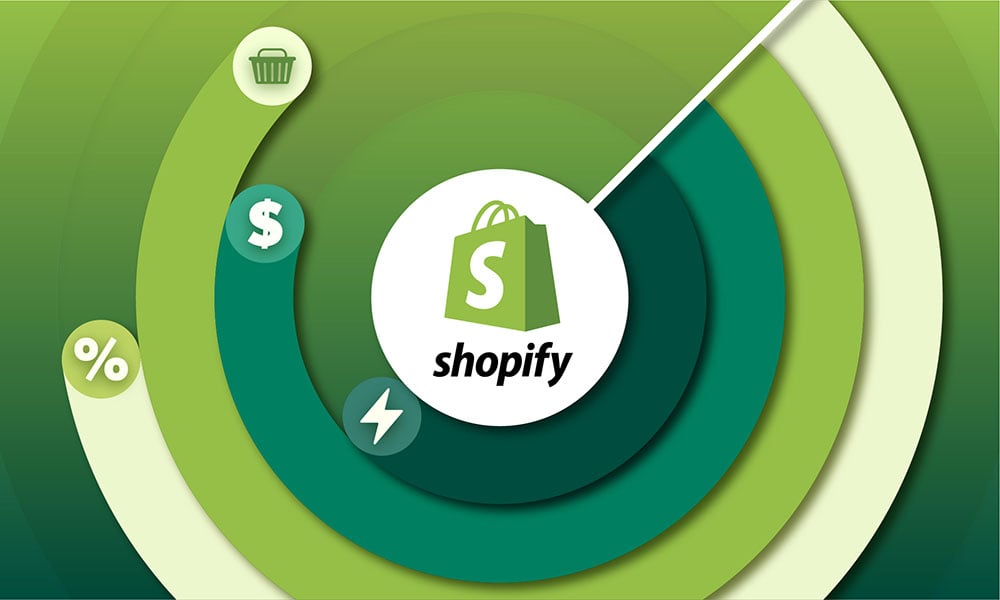It is irrefutable that eCommerce is taking a dominant position compared to traditional stores, but how can your businesses develop a competitive advantage among thousands of other eCommerce players in the market? Conversational commerce is the key. By leveraging the power of conversational interfaces, it has changed the way businesses engage with customers in the digital age. So, what is conversational commerce? How can your businesses start with conversational commerce?
Table of Contents
What Is Conversational Commerce?
Conversational commerce is a powerful approach in the eCommerce scene that enables businesses to have real-time, personalized conversations with customers through the combination of messaging apps and shopping. Typically, eCommerce websites do not include person-to-person support like traditional stores, and a certain amount of customers are surely not in favor of this approach. By including a way for any users coming to your website to have direct support, eCommerce merchants will close the gap between traditional business and online business. This brings multiple benefits to the business, namely:
- Enhanced customer engagement.
- Gather helpful feedback from customers.
- Be more available to customers without the use of too many resources.
- Reduce cart abandonment.
- Seamless shopping experiences.

Normally, functioning conversational commerce will include the following features:
- Messaging channels
- Automated chatbots
- Voice-activated tools
- Personalized communication
- Human support integration
- Omnichannel integration
These features work differently in each type of conversational commerce. Collectively, they enable your businesses to create convenient and seamless shopping experiences for customers within an integrated and personalized platform.
How Does Conversational Commerce Work?
Conversational commerce possesses superior features compared to the familiar eCommerce platform. Normally, eCommerce websites tend to apply SEO strategies to achieve a high ranking on Google; therefore, eCommerce websites typically use language that is optimized for search engines rather than customers. Thus, conversational commerce can capitalize on the lack of personalization and human interaction in eCommerce, which is surely preferred by many different groups of customers.

Conversational commerce works by utilizing messaging platforms and chatbot technology to facilitate real-time and personalized interactions with customers at every step in their purchasing journey. There are many ways to divide the customer journey, nevertheless, here we break down the journey into five main stages: awareness, consideration, decision, retention, and advocacy. With appropriate conversational commerce practices, your businesses can facilitate connection with customers during each stage, enhance the shopping experience, and transform each interaction into a long-lasting relationship.
Awareness
This stage begins when your customers look for solutions to their problems by doing research on their preferred platform; thus, they are likely to come across many brands and products, including yours. This is where your businesses should make a good first impression on customers. Conversational tools allow you to connect with potential customers in a friendly and personalized way, thus, building brand awareness and making a positive impression. Some practices may include:
- Make sure to include a live chat offer when customers need human support.
- Implement proactive engagement by initiating conversations with your customers through automated chatbot greetings to introduce your brands, products, or services.
- Set up automated chatbots for FAQs to provide immediate responses for customers.
- Make it clear on your websites/platforms that customer service is available 24/7.
- Use CTA such as Contact Us or Message Us alongside providing informational content.
Consideration
From the customers’ point of view, they already know a little bit about your business at this point. However, their research gets more in-depth as they begin to compare your products or services to those of your competitors and read reviews from other buyers. This phase shows how conversational commerce can be helpful because you can give customers more information about your products or services right away after introducing them on one platform. Some actions your businesses should consider might be:
- Utilize personalized features to address customers’ concerns.
- Provide short and specific answers to customers’ problems.
- Be transparent about pricing.
Decision
The decision stage is when customers are ready to purchase your product or are in the process of placing orders. So, their concern at this stage is not just about the product or service features or shopping experience anymore, but they also consider other factors such as performance/price and customer service. At this point, the conversation should keep going because businesses can offer any social proof and fix any problems right away if they arise especially payment-related ones. In this way, your businesses can create more value for customers with more responsive customer service, thus ensuring customers’ decisions on purchasing your products or services.
- Integrate secure payment options so that your customers can complete the purchases without leaving the chat interface.
- Offer personalized discounts or promotions.
- Inform customers about product availability, backorders, or other options so customers can buy with confidence.
Retention
Even after orders have been placed, retaining your current customers should not be taken for granted, as it is a key part of improving your business efficiency. When a customer reaches this stage, you should keep building a good relationship with them. Conversational commerce allows you to send after-service messages frequently, keeping your customers updated with new product features or discount programs (at a moderate frequency, do not flood your customers’ inboxes with your news).
Conversational tools also make it easier to get feedback from customers, which your business can act on quickly. Therefore, not only will your customers trust your businesses more, but you may also have more chances to improve your products or services, and your brand awareness may also be strengthened and enhanced.
- Offer personalized post-purchase supports such as order tracking updates or delivery information.
- Actively ask customers for feedback. You can do this by linking them to the review page and giving them extra points for each detailed review and rating they leave.
- Provide special offers or promotions when customers return to your website.
- Establish a personalized welcome pop-up.
Advocacy
This stage continues to highlight the benefit of using conversational commerce to provide post-purchase services to customers. This stage is a vital part of re-marketing strategies to strengthen your brand’s loyalty. As customers’ beliefs increase, the relationship between you and your customers is strengthened. Satisfied customers who have positive experiences with your businesses are more likely to become brand advocates, sharing their experiences and recommending the business to others.

With conversational commerce, customers engage in conversations through chat interfaces, where they can receive support, ask questions, get personalized recommendations, read reviews, and click to purchase, all from within messaging apps. By leveraging conversational tools, your businesses can enhance their performance and develop a strong relationship with customers throughout their buying journey.
- Offer referral incentives or rewards for existing customers who refer new ones, turning them into brand advocates
- Stay connected with customers by providing updates on new products, and promotion campaigns, thus, you can nurture the relationship and foster continued advocacy of your customers.
Detailed Benefits of Conversational Commerce
Conversational commerce can provide substantial advantages to businesses in enhancing their relationship with customers and improving business efficiency.
Enhanced Customer Engagement and Loyalty
By leveraging conversational commerce at each stage of customers’ journeys, the relationship between your businesses and customers can be strengthened, thus, enhancing customers’ engagement and loyalty. Your business can reduce the cost of finding new customers and increase sales from existing customers, who already trust and have high loyalty for your brand.
Gather Helpful Feedback
Natural conversations by conversational tools can also make it more effective to collect customers’ feedback. This can be done through messages and surveys after customers finish the conversation with a chat agent, or after their purchase. By asking for customers’ feedback immediately during the conversation, you can have a higher chance to collect customers’ opinions, thus gaining more understanding of their needs.
Be More Available to Customers without The Use of Too Many Resources
Taking place across digital channels, conversational commerce provides a more easy access platform and more efficient customer support. This is important in the first stage of the customers’ journey where customers are conducting research for solutions to their problems. Moreover, with the automation of some customer service tasks, the burden on employees will be lessened. This will be more helpful if your businesses have to deal with a large number of customers.

The automation feature of conversational commerce also helps your businesses to reduce a great amount of time for customer service, while can still gain significant customer loyalty. When optimized, with proper conversational commerce tools, one admin can serve up to 4-6 customers concurrently. So, as you can see, this is a more efficient way for your businesses to maximize profit substantially.
Reduce Cart Abandonment
Customers are most likely to abandon their shopping carts due to a complicated checkout process, including multiple steps and complicated payment. Moreover, customers may view their shopping cart as a wish list; consequently, they may leave products in their cart and compare the product’s prices on other sites. This cart abandonment ratio is more important for retailers as it directly impacts their revenue and overall business performance.
Using conversational commerce in retail, your businesses can utilize different approaches such as automated email messages, live chat, and popups to bring customers back and remind them to complete their orders. You can also provide customers with more immediate support to help them complete their purchases. And for many cases, a personalized discount code for abandoned that is sent via chat will be highly appreciated more than ones that are merely shown to customers. Thus, not only can you reduce cart abandonment, but also improve the relationship between you and your customers.
Seamless Shopping Experience
Given that customers are discouraged by the complicated payment process, conversational commerce can create a seamless shopping experience that brings quick and easy-to-use payment integration for customers. It allows your potential customers to seamlessly transition from conversation to purchase within the same messaging platform, instead of having to switch between apps to complete a payment. This can simplify the order placement process, enabling efficient procurement for customers.
Streamlining procurement processes is more important for B2B businesses whose targeted customers have more urgent needs for products/services. Therefore, implementing conversational commerce in B2B is a powerful way to provide exceptional customer service, and shorten the sales cycle, thus fostering your business customers’ loyalty and retention.
Types of Conversational Commerce
Conversational commerce comes in many different types that can be done by AI or with the help of a real person.
Divided by Conversation Types
Voice assistants
Voice assistants, such as Amazon Alexa, Google Assistant, or Apple Siri, interact with customers through voice-activated services. Customers can use voice commands to request product information, purchase products, and receive personalized recommendations, which are interpreted with natural language processing (NLP) and artificial intelligence (AI). With a voice-based feature, this conversational tool provides a hands-free approach for customers to interact with brands and access information. It can make shopping easier and more accessible because customers can do all of their shopping with voice-activated devices. Moreover, by analyzing voice interactions, your businesses can gain a deeper understanding of customers’ insights, which will help you create a more personalized offering for customers.
In building voice assistant content, the first practice your businesses should consider is selecting a voice personality that suits your brand. Most of the time, buyers judge information based on the context, if your business brings out a fun image, an uplifting voice will be more engaging for customers. By improving context awareness, you can also improve the voice assistant’s answer. This can be done by making the experience more personal and using data to understand and partly predict how users will react.
However, to be absolutely honest, we advise that only businesses with proper funds should consider adopting this, even though the benefits do look tempting., When your customers use voice commands to start and complete their purchases, they expect your system to work smoothly, so only consider this approach if you can ensure to optimize it before going live.
Social message
This method has been widely used by many businesses, as we are all familiar with such communication channels. Using conversational commerce, your businesses can leverage these platforms to connect with your potential customers in a cost-effective and efficient way. Customers can begin their shopping journey directly through integrated messaging apps provided by these social platforms. With an increasing amount of time people spend on social media, your business can tap into this user behavior to establish a presence that can attract customers at their awareness stage. Thus, leveraging social platforms to build conversational commerce is an easy and quick way for your businesses to raise awareness and reach customers.

Conversational commerce should first be built on these platforms due to their ability to reach a wide range of customers. Your businesses can also leverage the ecosystem of these social platforms, integrating conversational tools into multiple touchpoints. You may consider adding the DM button to your product page, ads, or live-stream videos. Thus, your businesses will be able to connect with customers at each stage of the buying journey and provide them with instant access to help at any time.
Standalone messaging apps
Standalone messaging apps are separate platforms from other social media networks, which can provide your businesses with a direct and focused channel to engage with customers. By allowing the use of GIFs, videos, and emojis, messaging apps can help facilitate more personal and natural customer communication, thus resulting in emotional connection with customers and higher conversion rates. The specific feature of these apps is their privacy, making them the most appropriate conversational type when it comes to delivering focused engagement for customers. Moreover, messaging apps are receiving more users than social media. Therefore, your businesses can expand your reach and have a higher chance to connect with a potential customer base.
With a more focused approach to customers, your businesses should choose appropriate messaging apps. Some criteria should be considered, such as whether or not the app’s features can meet the needs of your businesses and whether or not the app’s suppliers offer customization options. For example, if your businesses wish to provide personalized suggestions, you may prioritize apps that give strong automation or chatbot features; if your business focuses on visual content, priority should be given to apps that let users share rich media. With customizable options, you can change the features so that they work best with your business’s overall strategies. This lets you communicate with your customers in the best way possible.
AI Leverage or Not?
Chatbots
Chatbots are automated programs that stimulate customer conversations using artificial intelligence (AI) and natural language processing (NLP). They examine customer messages, figure out what they mean, pull out the most important information, and come up with the right answers. With automated features, chatbots have the ability to handle a high volume of inquiries simultaneously and ensure prompt responses to customer requirements. They can also be integrated into websites and messaging platforms. Thus, chatbots can enable your business to deliver diverse conversational experiences to customers throughout their buying journey through different channels for each stage.
On the other hand, leveraging AI capabilities can help free up human effort, allowing for more concentration on specialized tasks. With the ability to handle a larger number of customers within a shorter period of time along with fewer requirements for human resources, your businesses can improve operational efficiency.

However, one small note on applying chatbots is that all chatbots need to be told what to do, which means admins have to craft conversation scripts very carefully so that the scripts are detailed enough, as well as broad enough to cover all scenarios. Despite its considerable benefits, developing a fully functional chatbot requires relatively high financial resources as well as time and effort. Your businesses should consider these conditions before applying chatbots to your conversational commerce strategy.
Some recommended steps to build a functional chatbot script are:
- List down and summarize all the possible cases.
- Break down those cases into smaller steps, and determine the steps in ways that different cases can use in common.
- Write quality content for each step.
- Arrange the order of steps in a logical manner.
Live chat
Live chat is a powerful tool that enables businesses to engage in real-time conversations with customers. While chatbots are automated conversational agents that work based on programmed scripts, live chat, on the other hand, involves human agents who are available to respond to customer inquiries. This conversational type marks the superior feature of conversational commerce compared to traditional eCommerce platforms, which is the involvement of real human interaction. Therefore, live chat is able to offer a higher level of personalized experience for your customers. Moreover, with real-time conversation, your customers can ask questions, seek assistance, and receive immediate responses, thus, customer satisfaction can increase significantly.
However, despite live chat being a more cost-saving method than chatbots, it still has some drawbacks. Live chat scalability can be limited by the number of available human agents, therefore, it cannot handle multiple conversations with customers simultaneously. If your businesses face periods of high customer demand, live chat can put great pressure on your employees. Thus, your businesses may be required to spend a higher expense for hiring and training human agents.
To best apply this conversational tool, your businesses may consider integrating live chat with CRM software. Information about customer contact details and their order history can be collected and stored, enabling you to provide more personalized interactions. You should always include a live chat button on your product pages, ads, or blog posts for customers to use whenever they need human support.
However, if your customer base is too large for CRM software to effectively function, you may consider implementing a more powerful tool to precisely segment your customer base for better customer management. One suggestion for you is Insider – one of the leading providers of Customer Data Platforms.
Best eCommerce Platform to Start Conversational Commerce
For businesses that wish to start conversational commerce, it is necessary that they choose an appropriate platform. There are various platforms that provide extensive capabilities and interfaces to support this strategy.
Magento
Magento is a powerful, open-source eCommerce platform that is designed specifically for eCommerce businesses. It provides the robust features and customizable templates that you need to build a successful online store. It offers a scalable platform that can support your business’s growth smoothly.
Magento is also known for its flexibility and wide range of customization and integration options. It allows integration with many other well-known software programs like Google Adwords, Facebook Ads Manager, UPS, and so on. In addition to the platform’s built-in features, there are also a large number of extensions with diverse features for your online business. This feature of Magento provides your businesses with an opportunity to implement conversational commerce along with your overall online business performance.

There are three different versions available for Magento: Magento Open Source, Magento Commerce, and Magento Commerce Cloud. Each version has its own set of features and price levels so you to choose the one that works best for your business.
- Magento Open Source is a free and open-source version of Magento that is ideal for small enterprises and non-profit organizations. Your businesses can always add more integrations or extensions if you can afford an in-house developer team or hire a developer for it.
- Magento Commerce is the paid, enterprise-level version, that offers conversational tools as additional features. A notable example is Live Chat, powered by Dotdigital. Support options are also included in this edition.
- Magento Commerce Cloud is a cloud-based solution of Magento Commerce whose features are mostly the same as Magento Commerce. Still, the cloud options of this version will enable businesses so much more when it comes to optimizing the website loading speed and integrations to standalone chat apps.
To build a quality Magento online store in the shortest amount of time and with the least amount of effort, we highly recommend that you use a professional Magento development service. With Magento’s conversational commerce capabilities, your businesses can utilize AI-powered chatbots to increase customer engagement, provide convenient support throughout their buying journey, and increase sales by providing personalized approaches within the context of a conversation.
Shopify
Shopify is a well-known and user-friendly eCommerce platform that allows businesses to create and manage their online stores with ease. This is a beginner-friendly platform, which is ideal if you have little or no technological skills. You can set up a Shopify store in minutes, and you can easily change themes with a click of a button. A one-hour-long course on how to launch a Shopify store is a more efficient and time-saving way for you to get started with conversational commerce on this platform.
Shopify also offers a number of solutions for conversational commerce. Shopify Inbox is a free messaging platform that allows businesses to chat with customers as they shop across multiple channels, which is a notable example of Shopify conversational commerce. Conversations can range from answering product-related inquiries and making product suggestions to assisting with order tracking and addressing customer concerns.

With its user-friendly features, Shopify is the perfect platform if you want to start conversational commerce in a quick and easy way. It will be a more cost-efficient platform if your businesses do not require significantly diverse feature integration into one app. However, if you wish to save time to self-research the integration of conversational commerce into your Shopify store, our Shopify development service is here to help, not only for this need but also for the ongoing support of the long-term growth of your businesses.
WooCommerce
WooCommerce is an open-source eCommerce plugin for WordPress that enables your website to turn into an online shop. It offers a flexible platform that is customizable with a large theme resource and easy to integrate with other well-known platforms like Google Ads, HubSpot, Mailchimp, and Facebook. It also allows the use of extensions to choose practically any payment processor according to your preferences.
Conversational commerce can be established with WoowBot – WooCommerce’s chatbot. This is a simple and native WordPress eCommerce chatbot with zero configuration, bot training, or third-party integration required. Its advanced version is equipped with additional features that are able to provide automated customer support and can be integrated with OpenAI (ChatGPT) or Google’s Dialogflow.

Running on top of WordPress, WooCommerce can provide access to more than 55,000 free WordPress plugins and themes. You can customize your eCommerce stores in a lot of ways, including products, shop management, promotions, payments, shipping, upgrades, and subscriptions. If your businesses only require a medium degree of scalability and functionality, WooCommerce should be a great choice.
It is important to note that a considerable drawback of WooCommerce is that it is not a very beginner-friendly platform. Establishing itself as a plugin for WordPress, WooCommerce requires users to have a basic understanding of coding and technical knowledge. Also, its UI is not optimal for eCommerce businesses. If you want to begin your conversational commerce journey with WooCommerce, you should carefully consider this.
How to Start with Conversational Commerce
Analyze Business Needs and Goals
Assess your business capabilities and resources to choose the appropriate eCommerce and chat platforms. For example, if your businesses have a constrained budget, you should leverage social platforms where you can reach a wide range of customers with low expenses. On the other hand, if your financial resources are more abundant, you can consider using diverse types of conversational commerce, such as voice assistants and live chat, to make the most of this powerful tool.
It is also important to consider your business’s current needs and determine realistic goals you want to achieve. If you are a retailer, you may want to focus on increasing customer engagement to reduce cart abandonment, thus, using chatbots through messaging apps will be a suitable choice. If your customers are business owners, delivering a prompt, personalized response with a smooth process may be your priority. Live chat and voice assistants can be appropriate conversational commerce solutions for your businesses.
Choose A Conversational Commerce Platform
Choosing a dependable eCommerce platform is a significant step. The next phase mainly consists of implementing and managing the conversational commerce solution effectively, whose performance greatly depends on the capabilities of the chosen platform. The decision in this phase should also be based on your previous determination of business needs and goals.
Factors to consider when choosing an eCommerce platform include ease of use, scalability, integration capabilities, available features, and pricing. If you wish to establish a smooth conversational commerce process, you should choose a high-quality platform to integrate with. Some of the best eCommerce platforms are Magento, Shopify, and WooCommerce.
After choosing an eCommerce platform, it will come to determine a chat platform. The decision can be based on the current business flow: at which touchpoint does your company interact with customers the most? For B2B conversational commerce, it is LinkedIn. For retail conversational commerce, this can be more diverse, ranging from Meta ecosystem: Facebook, and Instagram; to online stores or your business’s websites. You should choose appropriate touchpoints where you have the highest chance of initiating conversations with your potential customers.
A final question to ask in this step is: Should we leverage AI? The answer depends greatly on your business’s resources and capabilities. If your businesses have a strong financial base and have to deal with a large number of customers, using AI for chatbots would be a more efficient option. Contradictively, if your businesses do not have high customer demand and a limited budget, using human agents would be a better choice
Define Your Conversational Commerce Strategy
You have the goal, you have the platforms and tools, and now it is time for action. A clear strategy for conversational commerce is the key to your success. For example, if your business goal is to increase customer engagement, using a chatbot to assist potential customers with their orders during the checkout process would be a good strategy.
You should also clearly determine all conversational commerce initiatives. These efforts include the types of inquiries your bot will handle, the channels it will be active on, and the language and tone it will employ. This is absolutely important, given that most customers judge information based on context, where, when, and how your businesses will respond to them have a direct impact on their satisfaction and willingness to purchase your products or services.
Craft Conversational Flow
Conversational flow is what guides interactions between customers and your chatbot. This step is important if you use a chatbot for your conversational commerce strategy. The conversation scripts should be crafted in a way that is detailed and broad enough to cover all scenarios from customer inquiries. The flow should also be straightforward, and the answers should vary at different stages of the customer’s journey. It is important to ensure that the conversational flow is intuitive, engaging and provides value to customers.
Test Chatbot
If you choose to use chatbots, it is necessary to conduct thorough testing of your chatbot before launching it to ensure that it functions properly. You may use sample customer inquiries and scenarios to evaluate how well the chatbot understands and responds to user input. Finally, you should identify any issues or areas in which your chatbot could be improved and make the necessary adjustments. Some key metrics to track the chatbot’s performance can include:
- Conversion rates
- Cart abandonment rates
- Average conversation length.
- Customer satisfaction scores.
In conclusion
Conversational commerce is indeed reshaping the eCommerce landscape. As technology continues to advance and consumer expectations continue to evolve, your businesses should adopt conversational commerce to remain competitive and deliver seamless, personalized experiences that foster long-lasting customer relationships. It is important to note that you should carefully choose conversational commerce platforms and tools that are appropriate to your business’s resources, capabilities, strategies, and goals. By then, you can make the most of the immense benefits of this platform. If you want to learn more about different ways to boost your eCommerce business performance, subscribe to our newsletters for more helpful content.











